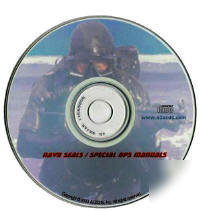Reduce Scrapping and Smelting, Promote Component Reuse > Complete Machines
> 1920 1940
> Concrete and masonry training course 300 pages on cd
Concrete and masonry training course 300 pages on cd
Illustrated Guide with Diagrams, Charts and Tables CD
Concrete and Masonry Training CDConcrete and Masonry Training CD
Over 300+ pages covering all aspects of concrete and masonry training on one CD-Rom! There are a total of six separate guides in all; Concrete and Masonry, Standard Practice for Concrete for Civil Works Structures, Grouting Technology, Roller-Compacted Concrete, Construction Print Reading, and Architectural Concrete.
This fully illustrated guide is packed with diagrams, tables, and charts and is a great learning tool and reference CD. Anyone interested in learning more about concrete, masonry, or grouting will find this guide extremely useful and a priceless educational asset!
This manual is primarily a training guide and reference for engineer personnel using concrete and masonry materials in field construction. It has two parts: Concrete (Part I) and Masonry (Part 2).
Part One covers the physical characteristics, properties, and ingredients of concrete; mixtures, design and construction of forms; and with reinforced concrete and field construction procedures.
Part Two addresses the mason"s tool and equipment as well as the physical characteristics and properties of concrete blocks, bricks, and structural clay tiles. It further explains construction procedures and methods for these masonry units.
Standard Practice for Concrete for Civil Works Structures
This manual provides information and guidance for the investigation and selection of concrete materials for civil works concrete structures. Elements discussed include designs studies and reports, preparation of contract plans and specifications, construction preparation, and concrete construction quality verification. Emphasis is placed on the problems of concrete for hydraulic structures. Roller-compacted concrete, shotcrete, rigid pavement, architectural concrete, and concrete for repairs are not included.
Structural design of precast and prestressed concrete for offsite prefabricated construction of hydraulic structures is also discussed. This manual provides interim guidance for structural engineers in the design and construction of precast and prestressed hydraulic concrete structures. The primary emphasis is on float-in and lift-in type structures.
This manual provides technical criteria and guidance for civil works grouting applications. Information on procedures, materials, and equipment for use in planning and executing a grouting project is included, and types of problems that might be solved by grouting are discussed. Methods of grouting that have proven to be effective are described and various types of grouts and their proportions are listed.
The purpose of this manual is to provide information and guidance on the use of roller-compacted concrete (RCC) in darns and other civil works structures. This manual does not cover RCC for pavements. Elements discussed include investigation techniques, inspection, and performance.
Construction print reading is a key skill for technical students. Fortunately, a formal education is not essential for achieving proficiency in this important subject; the study of correspondence courses such as on this CD can provide the essential skills.
This manual provides guidance for the design and construction of architectural concrete, including planning and design, forms, materials and proportions, batching and transporting, placement, curing and form removal, exposed aggregate surfaces, finishing, and quality assurance.
Concrete and Masonry Table of Contents (301 Pages Total)Concrete and Masonry Manual
Section I. Basic Consideration
Section II. Desirable Concrete Properties
Chapter 2: Concrete Components (20 pages)
Chapter 3: Proportioning Concrete Mixtures (20 pages)
Section I. Method Considerations
Section II. Trial-Batch Method
Section III. Absolute-Volume Method
Chapter 4: Form Design and Construction (56 pages)
Section IV. Joints and Anchors
Chapter 5: Construction Procedures (51 pages)
Section X. Temperature Effects
Chapter 6: Reinforced-Concrete Construction (22 pages)
Section I. Development and Design
Section II. Structural Members
Section III. Reinforcing Steel
Chapter 7: Basic Equipment and Components General (13 pages)
Section I. Mason"s Tools and Equipment
Chapter 8: Concrete Masonry (32 pages)
Section I. CHARACTERISTICS OF CONCRETE BLOCK
Section II. CONSTRUCTION PROCEDURES
Chapter 9: Brick and Tile Masonry (67 pages)
Section I. Characteristics of Brick
Section II. Bricklaying Methods
Section III. Brick Construction
Section IV. Reinforced Brick Masonry
Section V. Structural Clay-Tile Masonry
Appendix A Conversion Table (2 pages)
Appendix B Method of Making Slump (2 pages)
Appendix C Field Test for Moisture Deformation on Sand (2 pages)
